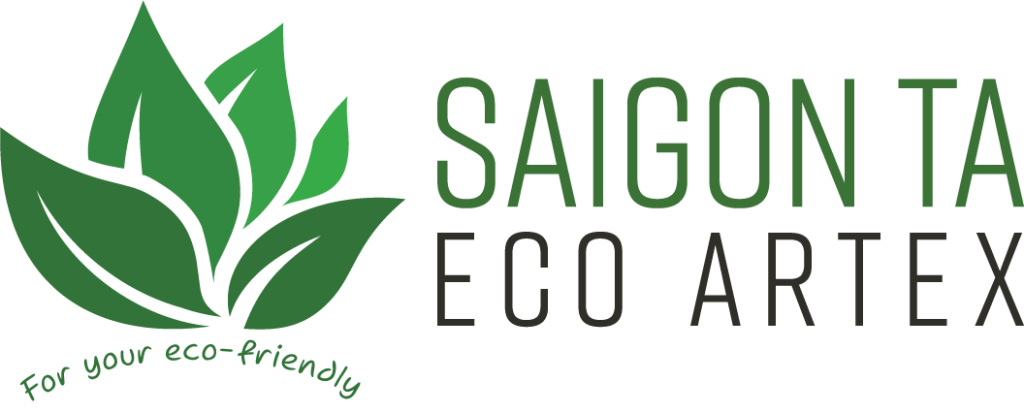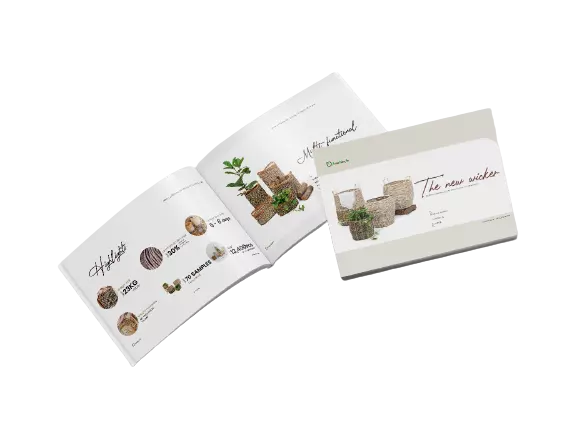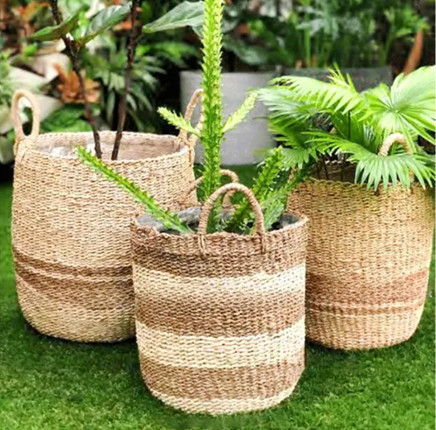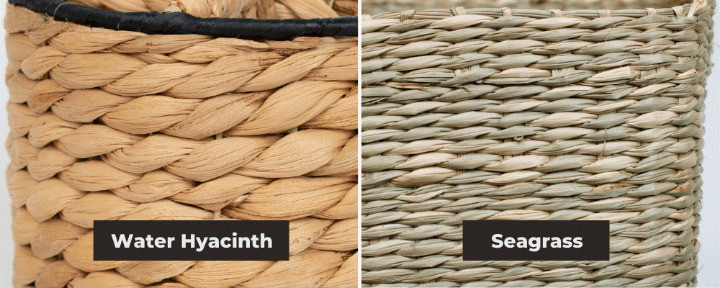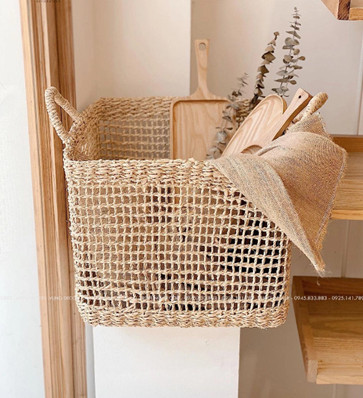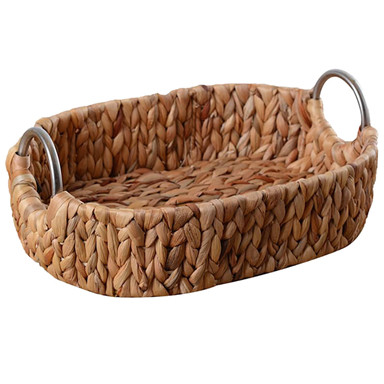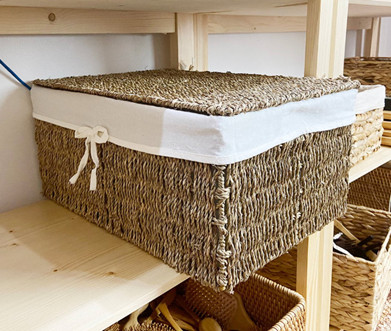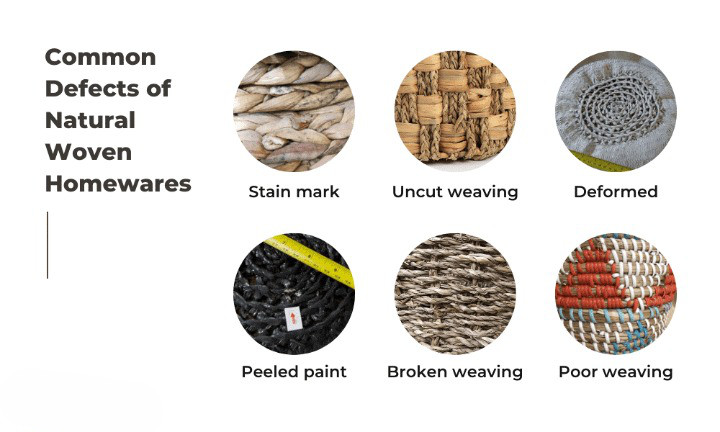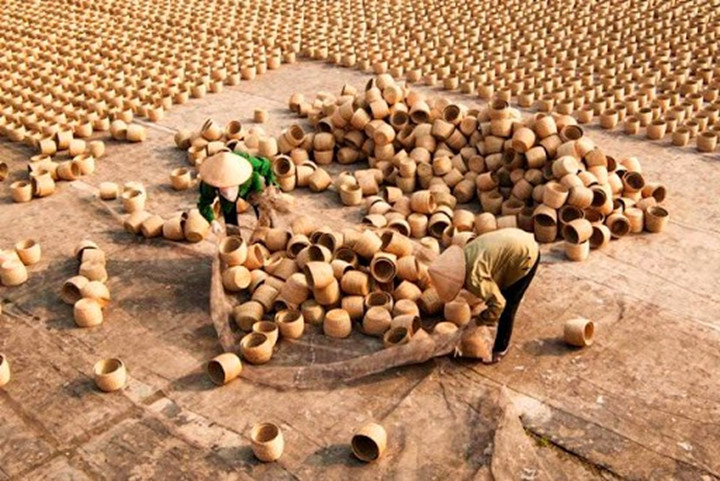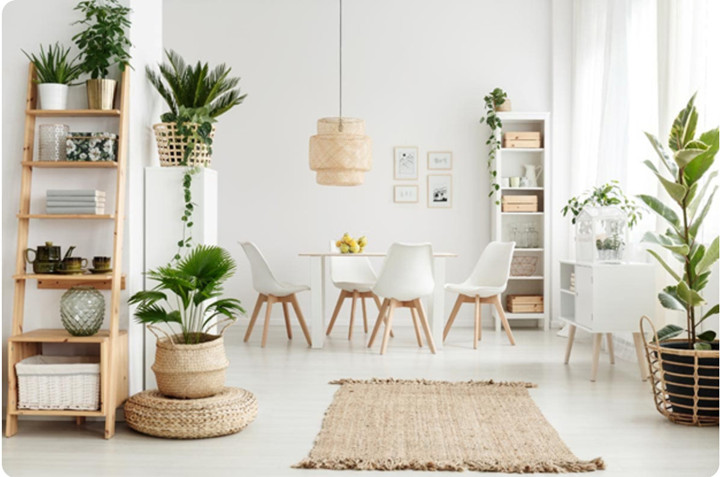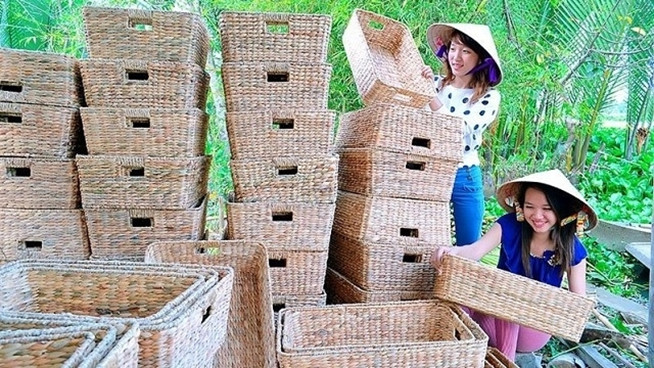Blog
Water Hyacinth Vs Seagrass: Key differences
Many confusions about water hyacinth and seagrass and the use of the terms interchangeably. They can all be considered knitting materials. But specifically, water hyacinth and seagrass are two different natural materials used to make household items. Do you know that?
Water hyacinth vs Seagrass Materials
Properties of water hyacinth vs seagrass
In terms of physical properties, seagrass is smaller in diameter than water hyacinth. It looks more rustic and shiny with a green tint that turns khaki or beige over time. Not only is hyacinth larger than seagrass, but the hyacinth stem is also softer with a warm yellow-brown outside. These two materials bring different tones and decor vibes.
Both water hyacinth vs seagrass is naturally biodegradable and non-toxic. They are pliable, flexible, and durable for weaving, not as rigid as bamboo and rattan. For homewares production, they need to be well-dried before the weaving stage.
Water hyacinth vs Seagrass woven homewares have different physical properties.
Water hyacinth vs seagrass are not waterproof and weather-resistant, so the wicker homewares are just for indoor use. The range of moisture content for seagrass and water hyacinth products is often from 10% to 19%, if there is not any moisture standard provided by buyers.
Colorfastness of water hyacinth vs seagrass
Can products made of these two materials be dyed or painted on? Our answer is yes, but there are some differences here. Thanks to their softer texture, water hyacinth stalks are better at colorfastness than seagrass fibers.
Seagrass itself features a protective oil surface which is a bit shiny and smooth. It’s the reason for uneven color and even discoloration (color fading) in dyed seagrass products. What’s more, dark, bold dye colors work better on seagrass than light ones.
As regards the painting method, the paint on seagrass is easier to peel off than that on water hyacinth.
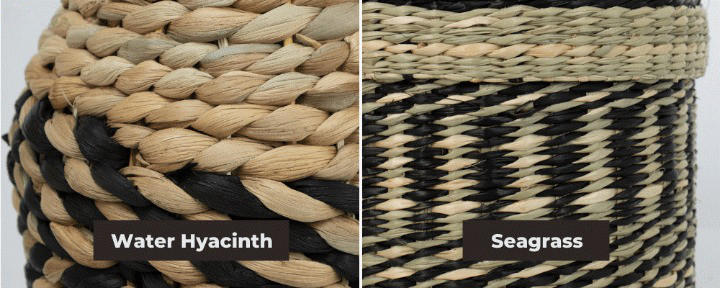
Material costs of water hyacinth vs seagrass
The material costs and qualities actually depend on specific areas. Aside from specialized areas of each material, the cost of weaving styles also contributes to the final prices of products.
Thanks to the favorable climate conditions, seagrass has been cultivated widely along the Vietnamese coastal provinces. However, seagrass has better quality, lower cost, and larger production volume in the Northern area, especially Thanh Hoa and Thai Binh province.
Meanwhile, water hyacinth is a popular aquatic plant spreading in water ponds and aquariums throughout Vietnam. This plant in the Southern areas commonly delivers better quality at a lower cost.
Water hyacinth vs Seagrass Weaves
Locally skilled artisans develop from one material into many weaves. Depending on specific weaves, seagrass and water hyacinth may undergo simple or complicated processing. Each one has different appearances, physical properties, production costs, and lead time.
6 Seagrass Popular Weaving Styles
- Split seagrass
• Twisted seagrass
• Braided seagrass
• Pressed seagrass
• Coiled seagrass
• Wrapped seagrass
Coiled seagrass is the most expensive weaving style. It creates a thick weave with a lot of seagrass and needs much effort from artisans.
9 Water Hyacinth Popular Weaving Styles
- Rolled weave
• Twisted weave
• Rice nut weave
• Arrow weave
• Braided weave
• Asterisk weave
• Hexagonal weave
• Zigzag weave
• Flat weave
Of all water hyacinth weaves, rolled weave costs the most because of its complex production process and more material usage. The most inexpensive weaves are Asterisk, Hexagon and Flat weave. Interestingly, some certain weaves of water hyacinth and seagrass can be combined in one product.
Water hyacinth vs Seagrass Applications
Both these two materials have been used to produce a wide range of homewares and home furnishings. Specifically, water hyacinth vs seagrass do a great job for some certain categories.
Wholesale seagrass baskets with black dyed seagrass
Rectangle seagrass storage
Seagrass and water hyacinth are perfect as a decorative element in any space, no matter their specific functions. Highly durable and sturdy, a water hyacinth or seagrass homeware product can work well for 5 years and more, as long as it is given with proper care and protection.
Water hyacinth vs Seagrass Problems
Being crafted by hand, natural woven homewares are not exactly alike, offering each product unique characteristics. However, both water hyacinth vs seagrass products perhaps has several workmanship problems if not processed, woven and stored carefully.
Here’re common problems that you should know for inspection, especially pre-shipment inspection when working with wholesale home decor suppliers:
- Stain mark: It can be a stain of dust or mold that develops if the products are kept in an environment with a high level of humidity. As you know, both water hyacinth vs seagrass can absorb moisture from the air well. Also, products may get stains from outside during the gluing stage.
- Uncut weaving: Trimming is essential for both water hyacinth vs seagrass products. It is even compulsory for specific weaves such as braided seagrass, twisted seagrass, pressed seagrass, and twisted water hyacinth.
- Peeled paint: This commonly happens on seagrass products that have a rough surface, particularly those made with twisted, braided weaving styles.
- Deformed: If woven products come along with iron frames, their sturdiness will be ensured, and there is little chance of deformation. Deformation often occurs for products without iron frames, and their weaves are not so thick and tight. Sometimes, not given proper care and storage before shipping, water hyacinth vs seagrass products can be deformed too.
- Broken weaving: The broken weave of products might be the result of low-quality water hyacinth vs seagrass materials (not well sorted before) or a careless weaving process.
- Poor weaving: Poor weaving here means that the weaves are not formed tightly. That causes not-good looks and inconsistent quality, and need artisans to re-do the weaving for products.
Common defects of wholesale homewares woven from water hyacinth vs seagrass
Care Instructions of Water hyacinth vs Seagrass
As water hyacinth and seagrass shares some natural traits in common, below care instructions can be applied for products made of two materials.
- Store: Store products in a dry, well-ventilated environment with a low level of humidity. That enables woven products to prevent from developing mold.
- Clean: If there are stains or dust on water and seagrass products, wipe with a dry clean cloth, or wipe with a damp cloth then dry in the direct sunlight completely (about 2-3 days).
If you are a new or inexperienced buyer of natural woven homewares, the information on water hyacinth vs seagrass differences will be of some use to you. The insights help you communicate and work effectively with wholesale home decor suppliers in Vietnam.
If are you interested in natural woven homewares, especially made from water hyacinth, seagrass, rattan, and bamboo, please feel free to contact us for further details and quotations!
